Regional economy. Рубрика в журнале - Economic and Social Changes: Facts, Trends, Forecast
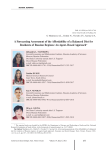
Статья научная
Amid the coronavirus pandemic in Russia, the financial situation of households is deteriorating, as well as their ability to provide themselves with a full-fledged and balanced diet with an optimal content of nutrients, vitamins and minerals. The aim of the work is to conduct a forecasting assessment of the affordability of a balanced diet for households in the context of various scenarios of the economic and epidemiological situation. The applied research methodology involves creating a comprehensive agent-based model reflecting the course of demographic and economic processes that determine food production, people’s income and health. When assessing the affordability of a balanced diet, we consider the number and income of households and the share of income allocated for the purchase of foodstuffs. The information content of the model is based on data arrays available at the websites of the Federal State Statistics Service of Russia, ministries and departments; we also use the data of a product prices monitoring conducted specifically for this purpose. We develop balanced diets that ensure the intake of 75 and 90% of key vitamins and minerals with the necessary caloric content. The products included in the diets are optimized by price; on the basis of the results of the prices monitoring, we estimate the cost of the diets and their affordability for the population in each region of the Russian Federation, according to the data as of 2020. The affordability of diets in different regions varies greatly: from 35% in the Chechen Republic to 95% in Moscow, with an average value of 83%. Scenario-based modeling of the affordability of high-quality food for Russian population is carried out for the period through to 2025. Under the optimistic scenario, there is a decrease in the affordability of diets to 81%; under the conservative and pessimistic scenarios, we observe a steady decline in the affordability of vitamin diets to 76 and 72%, respectively. The results we have obtained indicate serious risk of deterioration of the quality of nutrition of Russian residents; it is associated with falling incomes and rising food prices. Besides, within the framework of scenario-based calculations, we have determined the amount of subsidies to be provided to low-income population groups so that they could afford a balanced diet.
Бесплатно

About the prospects for development of the region on the basis of interregional cooperation
Статья научная
The paper considers issues related to the development of interregional economic cooperation. The primary hypothesis is the thesis that the strengthening of interregional relations is an important factor in regional economic development. This thesis is confirmed by analysis and generalization of several scientific theories. Using an industrialized region of Russia (Vologda Oblast) as a case study, the authors test their own methodological tools of activization of interregional cooperation as a factor in the development of economy in an industrialized region. The general logic of using this tool involves three main interrelated steps: informational-analytic, target and implementation. The information-analytical step involves collection, systematization and analysis of the materials that constitute the necessary information base. The target step defines possible solutions to the problems related to interregional cooperation of the Vologda Oblast, forms the targets and objectives (taking into account national goals and regional tasks of industrial development), highlights the priorities of work in this area and calculates possible consequences of their implementation...
Бесплатно

Adaptation of companies in the Republic of Karelia to the economic recession in Russia in 2014-2015
Статья научная
Regional companies in Russia found themselves in unique conditions of negative consequences of sanctions and reducing resource revenues in resource-driven Russian economy. Regional companies are not ready to the new economic reality, which makes it a hallmark of the economic recession in 2014- 2015. Our study captures the reaction of regional companies to sharp market changes and selection of new adaptive patterns of behavior aimed at developing and sustaining business. The purpose for the study is to assess the impact of the economic recession in Russia in 2014-2015 on the adaptation of companies in the Republic of Karelia to recession conditions. The impact of events was recorded directly from the estimates and intentions of management in the process of conducting half-formalized in-depth interviews with companies' leaders. Based on the method of quota arrangement, we selected key stakeholder companies in 3 regions in the Republic of Karelia and made a list of special respondents occupying leading positions in the companies...
Бесплатно
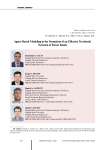
Agent-based modeling in the formation of an effective territorial network of forest roads
Статья научная
The paper considers conceptual and methodological aspects in creating computer simulation agent-based models which provide decision-making on the formation of an effective territorial network of forest roads. The key aim of the research is to interpret and test a service-oriented approach to building such models. The approach is based on the principle of interaction between the following objects distributed in space: service providers and consumers. We consider issues related to constructing and operating a network of forest roads used for forest harvesting processes. Complexity in solving these problems is due to a large number of interacting elements and estimated parameters that differ in their impact on the system depending on a particular territory. Thus, such problems are solved using simulation modeling methods, in particular, the agent-based approach, which is one of the most promising ones among them. At the same time, it is determined that they are constructed without using a formalized methodological framework, which does not allow us to interpret the results obtained here as a unified concept of formation of agent-based models in the subject area. To fill this niche, we propose our own concept based on the service-oriented approach. We present main fragments of formal description of the approach and describe some aspects of its applied interpretation using a prototype of game agentbased model in AnyLogic environment. We use general scientific methods: formalization, abstraction, generalization; methods of system analysis and agent-based modeling. As a result of the work we developed and tested our own concept of agent-based modeling of effective territorial transport infrastructure of the harvesting system. The novelty of the concept lies in the use of service-oriented approach. In addition, the concept can be used as a universal basis for building the models in question. This will require the development of methodological aspects of its application, a full-scale interpretation of the possible uses, as well as practical testing on real systems.
Бесплатно
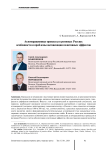
Статья научная
Urban agglomerations currently play an important role in the spatial development of most countries, since they are key centers of economic growth, generation and diffusion of innovations. In theoretical and practical terms, as a rule, the greatest attention is paid to studying the largest and large urban agglomerations (under current legislation, in Russia these include agglomerations with a population of more than 1,000 and 500 thousand people, accordingly), while insufficient attention is paid to the real prerequisites and features of the development of other emerging/potential agglomerations (the so-called “second-tier” agglomerations). In this regard, the aim of the study is to identify features and challenges related to the intensification of agglomeration processes in Russia’s regions, taking into account the provision of positive effects. To achieve the goal, we use a wide range of general scientific (analysis, synthesis, systems) and applied economic and statistical methods (index, correlation analysis). Scientific significance of the study lies in the development of methodological approaches and tools for assessing agglomeration processes, determining their specifics in Russian agglomerations of the “second tier”. We reveal that the continuing concentration of a significant share of regional production, investment and population in the agglomerations under consideration is the key feature in their development. At the same time, in fact, agglomeration processes extend only to the core of the agglomeration and the territory closest to it; this is manifested in the convergence of their growth rates in key socio-economic indicators. These facts indicate a rather low development of the satellite zone of “second-tier” agglomerations and a weak transmission of positive effects to the periphery, as well as an excessive development of the core, which in the future may be a threat to the stable development of such agglomerations. In the final part of the work, we substantiate priority directions to increase the internal integration of urban agglomerations as open socio-economic systems that will ensure the generation of positive externalities and turn “second-tier” agglomerations into growth points at the macro and regional levels.
Бесплатно
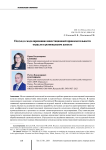
An approach to modeling the investment attractiveness of the industry in the regional aspect
Статья научная
At present, attracting investments in Russia’s strategically important sectors remains a critical issue in the development of the domestic economy. Under the current sanctions pressure against the Russian Federation, the development of manufacturing industries is becoming the leading task in ensuring nationwide economic growth. The aim of the study is to develop a methodology for calculating the aggregated factor coefficient of investment attractiveness for a complex of manufacturing industries in the regions, based on econometric modeling. The investment attractiveness of a complex of manufacturing industries is understood as a set of significant factors that determine the inflow of investments into a complex of manufacturing industries. As a result of the study, we revealed that at the moment there is no unified generally accepted methodology for assessing the investment attractiveness of manufacturing industries; factors determining their investment attractiveness are not systematized; there are no studies devoted to identifying statistically significant factors for this type of economic activity. In this regard, a model was developed for selecting significant factors promoting investment attractiveness of a complex of manufacturing industries in Russia’s regions. According to the methodology, the final aggregated factor coefficient is formed on the basis of private indicators that were combined into groups of factors, which allows us to identify the most important factors affecting the investment attractiveness ofthe manufacturing industry in a particular region and identify strategies to improve their investment attractiveness. The analysis of the aggregated factor coefficient will help potential investors to determine in which regions the complex of manufacturing industries is most promising for investment, as well as what measures need to be taken to improve the investment attractiveness of the complex of manufacturing industries in regions with a low coefficient value. The evaluation results showed that the most significant factors are production, labor, and innovation factors promoting investment attractiveness of the manufacturing industry. Our approach and the results we obtained can be used by public and private investors to make a decision on the expediency of investments in the industry and by authorities when forming investment policy, taking into account regional industry specifics.
Бесплатно
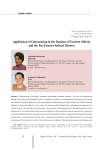
Application of outsourcing in the regions of Eastern Siberia and the Far Eastern federal district
Статья научная
Outsourcing is currently common in Russian business practice. The use of outsourcing changes the system of management in a company and affects its performance indicators. The aim of this study is to identify patterns in the development of outsourcing in regions of the Far Eastern Federal District and Eastern Siberia on the basis of empirical data. Despite the widespread introduction of outsourcing in the activities of enterprises, the patterns of development of this phenomenon at the regional level, its relationship with economic indicators and investment attractiveness of the regions are not studied sufficiently. The relevance of the study is determined by the strategy of improving the business environment in the regions with the aim of attracting investment and implementation of innovative technology. Our research is built on the information methods of data structuring and correlation and regression analysis. We selected activities that are transferred to outsourcing and developed a structure of a multidimensional data array that helps apply various methods of analytical data processing...
Бесплатно
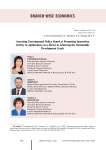
Статья научная
In the context of new global challenges and fulfillment of commitments to implement the Sustainable Development Agenda for the period up to 2030, it becomes especially relevant to assess the effectiveness of the current innovation policy pursued by the Russian Federation and its compliance with the priorities of sustainable development adopted by the international community. The purpose of the study is to assess the results of state policy aimed at enhancing innovation in the agricultural sector and to determine the extent to which the targets of programs and strategies for the development of agribusiness in the innovation sector comply with the priorities of Agenda 2030. Applying the system approach to the study of the concept for sustainable development and using our own integrated methodology, we have found that there are no significant results regarding the implementation of innovation policy; we have also revealed an extremely low degree of consistency of federal and regional sectoral programs with the priorities of the Sustainable Development Goals. We have determined that at present it is difficult to conduct a quantitative assessment of the results of innovation policy implementation at the level of a particular region, industry or company; the available indicators do not help to assess their contribution to the achievement of innovation-oriented Sustainable Development Goals. In this regard, we propose to include the objectives of the Sustainable Development Goals in state, sectoral and regional programs for scientific and technological development and to develop a system of their indicators, consistent with the targets of the documents on strategic development of agribusiness in the innovation sector, for monitoring purposes. Thus, the scientific novelty of the research lies in the development and implementation of our own approach to identifying the degree of compliance of the targets of current programs for development of the agricultural sector with the priorities of innovation-oriented Sustainable Development Goals. The results of this study can be used by executive authorities in the development and substantiation of correcting measures aimed at improving state policy in the field of promotion of innovation in the agricultural sector and, as a result, achieving the Sustainable Development Goals.
Бесплатно
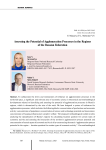
Assessing the Potential of Agglomeration Processes in the Regions of the Russian Federation
Статья научная
To substantiate the levers and mechanisms of influence on agglomeration processes in the territorial space, a significant and relevant area of economic science is theoretical and methodological developments related to identifying and assessing the potential of agglomeration processes in Russia's regions, which is determined by the aim of the work. We have designed a system of indicators for agglomeration processes, which includes the following blocks: concentration of production and economic activity; concentration of population; concentration of science and technology potential and innovations; concentration of housing infrastructure; people's welfare. The proposed methodological toolkit involves analyzing the specialization of Russia's regions by calculating location quotient for certain types of economic activity and assessing the interaction of the territory's agglomeration process potential and concentration of certain types of economic activity in it by constructing the matrix “agglomeration process potential in the region - location quotient for certain types of economic activity”. Our methodological approach was tested on 85 constituent entities of the Russian Federation. The research period included the years 2000, 2008, 2016-2022. The information base comprised data from the Federal State Statistics Service. According to the results of the calculations, we see a high degree of differentiation of agglomeration processes potential in the Central and Northwestern federal districts. Intensive agglomeration processes are observed in the Kaliningrad, Leningrad, Rostov, Nizhny Novgorod, Sverdlovsk, Tyumen, Novosibirsk regions, Krasnodar and Krasnoyarsk territories, the city of Sevastopol and the Republic of Tatarstan. There is a low potential for agglomeration development in the North Caucasus and the Far East, and in some years there were no agglomeration processes in the Chechen Republic and the Republic of Ingushetia. The findings of our research can be used by regional authorities in designing strategic planning documents, by a wide range of researchers in the field of spatial economics, and by teachers and students in the framework of personnel training in economic specialties
Бесплатно
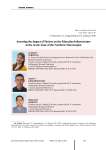
Статья научная
Given the orientation of Russia’s state policy toward the development of its Arctic zone, one of the major directions of socio-economic development in these territories is to modernize educational facilities and form a system of qualified personnel. Having calculated the rate of changes in the indicators, we reveal negative trends in the development of school and vocational education infrastructure in the Arctic zone of the Northern microregion; this confirms the relevance of the study. The education infrastructure, regarding its components, is understood as a set of infrastructure facilities of preschool, school and vocational education, as well as their staffing with qualified specialists. The aim of the research is to identify and assess the impact of a set of factors on the change in the education infrastructure in the Arctic zone of the Northern macroregion. We study the object of research at the mesoregional taxonomic level of spatial-territorial Arctic systems in relation to specific local communities; this increases the objectivity of our findings. The geography of the study is based on an institutional approach and includes Arctic mesoregions of the Arkhangelsk Oblast, Nenets Autonomous Okrug and the Komi Republic, which together form the Arctic zone of the Northern macroregion. We put forward our own methodological approach to assessing the impact of factors on social infrastructure in the Arctic zone of the Northern microregion. The approach contains a system of indicators reflecting changes in the education infrastructure and economic, demographic, spatial-territorial and socio-labor factors affecting it over the past fourteen years. We use methods of comparative analysis, systematization and grouping, statistical and correlation-regression analysis. The results of the study allow us to conclude that the influence of the factors on the education infrastructure in the Arctic zone of the Northern macroregion is differentiated depending on the nature and pace of development of the territories under consideration, state policy implemented in these territories, and other factors.
Бесплатно
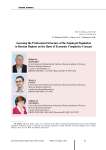
Статья научная
The skill level of an employee has a significant impact on the formation of employment indicators and economic development. Current scientific discussions are devoted to assessing the prospects for development of the labor market, identifying professions that will be in demand in the future and that will determine the possibilities for the development of human capital. The aim of the work is to assess the economic complexity of professional employment structure and the economic complexity of professional groups of the employed population in Russia’s regions, and to identify trends in the development of regional labor markets on this basis. The assessment of the economic complexity of the regional structure of professional employment can be considered as a characteristic of the level of human capital development, since the region’s ability to bring the develop of professional groups with high estimates of economic complexity to the level of strong ones depends on the knowledge accumulated by employees. Estimates of the economic complexity of professional employment structure in Russia’s regions and the economic complexity of professional groups were obtained according to the data for 2018, 2020 and 2021. For five professional groups, the grades of economic complexity assessments do not change over time, including those for doctors of sciences, candidates of sciences and specialists of the highest skill level. For four professional groups, the ranks change slightly - no more than by a unit. The ranks of complexity assessments change significantly for two professional groups: “managers” (the position of this professional group is improving) and “employees of the service and trade sector and protection of citizens and property” (their position is deteriorating). The ranking of the professional group “unskilled workers” is higher than the rankings of the three groups of skilled workers. The rankings of assessments of the complexity of professional groups correspond to existing opinions about the average level of human capital development among representatives of these groups of the employed population. Estimates of the economic complexity of the structure of professional employment and professional groups can be used to develop a methodology for choosing priority areas for diversifying the region’s economy.
Бесплатно
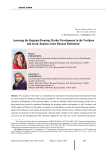
Статья научная
The purpose of the study is a comprehensive assessment of housing market development based on a new system of indicators reflecting the population’s solvency and demand in the housing market, the economic development of the housing market, in order to identify trends in the housing market over a long period and reveal key problems hindering the housing market development in the Northern and Arctic regions of Russia. In this paper we propose a methodology to assess the regional housing markets, analyze the indicators of economic development in the North and the Arctic, estimate people’s financial capacity and demand in the housing market, indicate major changes in the regions’ housing sector that can occur on the background of the measures applied by the state due to the coronavirus pandemic. The scientific novelty of the work is determined by a comprehensive study of regional housing markets in the Northern and Arctic regions using the indices proposed by the authors, which made it possible to formulate a number of proposals for developing the housing market in the Arctic and Northern regions of the Russian Federation. The study results can be used by the government and administrative authorities in developing policies in the field of providing the population with comfortable housing and improving the regions’ housing stock, in working out the programs aimed at housing construction, as well as by specialists in the field of finance, researchers. In the future, based on a comparative analysis of the regions’ housing development, the authors plan to predict the regional housing markets development taking into account the changing parameters of population solvency and construction industry, considering the specifics of the Federation subject’s development and the effectiveness of government measures in this sector of the economy during the crisis period of the pandemic.
Бесплатно
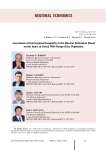
Статья научная
As part of this study, the goal was to develop adequate (high-precision) tools that would allow for not only a retrospective, but also a prospective assessment of interregional inequality in living standards in the Russian Federation based on the index of social well-being of the population, which is the result of a convolution of private indices. At first, a hypothesis was put forward about the possibility of building an adequate prognostic (traditional econometric) model of dependence of per capita average monetary incomes of the population on a group of factors. The information base of the study was exclusively official data of regional statistics for 2020-2022. In the course of empirical research (correlation and regression analysis), three econometric models differing in the number of factors (from 2 to 4) were developed. However, they allow (according to the average approximation error, taking values from the interval from 8.8 to 9.6 % for different econometric models) approximating regional statistics data only with an acceptable degree of accuracy. Next, a similar hypothesis was tested, but involving the use of a different tool (index method in combination with artificial intelligence), which makes it possible to measure the dependence of the population’s standard of living on a group of factors. In the course of neuromodelling it was found that any of the 5 artificial neural networks included in the Bayesian ensemble allowed approximating the regional statistics data with a high degree of accuracy (with an average error from 2.8 to 3.9 %). Thus, the second hypothesis can be considered confirmed. As part of the study, the predictive function was implemented by forming a Bayesian ensemble of artificial neural networks. The obtained results of the empirical study can act as a scientific basis for adjusting (updating) the socio-economic policy of regulating the quality and standard of living of the population and its interregional inequality among the constituent entities of the Russian Federation.
Бесплатно
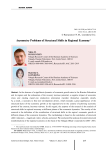
Asymmetry problems of structural shifts in regional economy
Статья научная
In the absence of a significant dynamics of economic growth rates in the Russian Federation and its regions and the exhaustion of the recovery increase potential, a negative impact of economic crises and existing export-raw production orientation manifest themselves especially clearly. As a result, a necessity to find new development drivers, which includes a great significance of the structural factor of the economic growth at the regional level in the context of achieving economic growth of the country, becomes relevant. In this regard, the purpose of the research is the analysis of structural shifts in regional economy at different phases of the economic dynamics. The novelty of the research is the definition of the contribution of structural shifts in the region's economic growth at different phases of the economic dynamics. The methodology is based on the calculation of structural shifts' indicators - magnitude, index, velocity, and power. We conducted the analysis of sectoral structural transformations of the regional economy on the basis of the Vologda Oblast's materials for 2005-2018. The research revealed a low diversification and efficiency of adding economy into global chains of value added. We calculated the impact of the structural factor on the growth of gross regional product depending on an increase or decline in the economy. The activation of the potential of agriculture, mechanical engineering, and electronic industry sectors is seen as very promising. We calculated the multipliers of the impact of the stimulation of the proposed sectors on the basis of the inter-sectoral balance model. We reviewed the structural-investment policy as an important instrument of changing national economic proportions. The idea of forming the benchmarking system, concerning the efficiency of conducted structural policy, was substantiated. A practical importance of the research is an opportunity to use its results by authorities for the formation of regional structural policy. We will continue the studies related to the determination of the dependence of regional economy's growth dynamics on structural dynamics in the investment process, organization of the factor analysis of the industry shifts and economic growth, and formation of the system of optimal indicators of the structural policy benchmarking.
Бесплатно
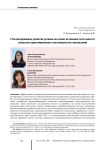
Balanced development of the region based on promoting socially oriented non-profit organizations
Статья научная
The effectiveness of managing the regional economic system depends on many factors, including the willingness of authorities to involve non-governmental economic actors in addressing social issues. In this aspect, the functioning of socially oriented non-profit organizations is of great importance. The aim of our study, using the tools of a systems approach, is to develop directions to improve the system for managing balanced development of the region by promoting socially oriented non-profit organizations. The work is based on the results of foreign and Russian research, and the data from the research commissioned by the Grants Fund of the Governor of the Perm Territory in 2020-2022 using qualitative sociological methods. We analyze the system for managing balanced development of the regional economic system using the example of the Perm Territory, regarding the work of socially oriented non-profit organizations. Based on the criteria related to the ability of organizations to diversify the budget and the range of tasks performed, we identify conditional types of socially oriented non-profit organizations. We determine the directions for optimizing the external and internal environment in order to create institutional conditions for their development on a systems and long-term basis in the region. We propose an organizational and economic mechanism for managing the region’s balanced development by promoting socially oriented non-profit organizations; this mechanism is determined by the cyclical nature of stimulating SONPO development and the choice of prevailing methods of managerial influence depending on the stage of the organization’s life cycle. We prove that socially oriented non-profit organizations are perceived primarily as an object of state support; this fact limits the possibilities of using their potential in the region. We conclude that it is necessary to find a new approach to these organizations so that they would be perceived as active economic entities, which requires improving the institutional conditions for the activities of socially oriented non-profit organizations and including them in the management system for balanced development of the regional economic system.
Бесплатно
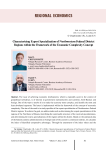
Статья научная
The issue of achieving economic development, which is especially acute in the context of geopolitical turbulence, is of interest to government representatives and scientists, both Russian and foreign. One of the ways to resolve it is to make the economy more complex, and identify the most and least developed segments. The latter is implemented within the framework of the concept of economic complexity. The aim of the work is to study specifics of the export specialization of Northwestern Federal District regions. To achieve the goal, we address tasks such as determining the export specialization of the regions of the Northwest of Russia, identifying the commodity structure of the received specializations, and determining the micro-specializations of the regions within the district. Based on the statistical data of the federal customs administrations on foreign trade of the country’s constituent entities, we calculate the index of identified comparative advantages. Through the assessment of the index values and the contribution of goods to the total volume of exports of the regions, we determine the goods of the export specialization of Northwestern Federal District regions and reveal the main specialization of the district. Among the goods characterized by a small contribution to the total volume of exports of the regions, the search for promising micro-specializations is carried out in two ways. As part of the first method, among the goods exported by Northwestern Federal District regions, we highlight those in whose supplies Russia occupies a leading position in the world. The second way is to assess the markets of developing countries. Scientific novelty of the research lies in the definition of goods of export specialization of Northwestern Federal District regions using the tools of the concept of economic complexity. Information base of the study includes data from federal customs administrations, the financial company MSCI, foreign databases Trade Map and The Observatory of Economic Complexity, as well as Russian and foreign research in the field of industry specializations. The results of the study can be used by regional authorities in the development of strategic documents, to substantiate economic policy in the search for promising economic specializations and market niches.
Бесплатно
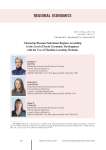
Статья научная
The paper solves the problem of clustering Russian Federation regions according to their socioeconomic development, taking into account the sectoral structure of the gross regional product. Classical machine learning methods are a tool for solving the clustering problem. The object of the study is the differentiation of regions according to various socio-economic indicators. The subject of the study is the practice of using machine learning methods for clustering objects. The initial database for solving the problem of clustering regions includes actual statistical data on socio-economic development of RF constituent entities and the sectoral structure of their gross regional product as of 2019. We identify clusters of regions according to their socio-economic development with the use of modern machine learning methods implemented in Python, a high-level programming language, with the connection of libraries for working with data: Pandas, Sklearn, SciPy, etc. The preprocessing of the initial data was carried out: digitization of data categories, transition to specific values, standardization of indicators. The initial data set for 2019 contains 5,525 records on 65 indicators of socio-economic development for 85 regions of the Russian Federation. It identifies 15 basic indicators of socio-economic development of a region, based on the principal component analysis. According to these indicators, five regional clusters were identified with the use of the k-means clustering: the first cluster is characterized by a high share of wholesale and retail trade, real estate transactions, professional, scientific and technological activities in the GRP structure; the second cluster specializes in manufacturing, wholesale and retail trade, real estate transactions, agriculture and forestry; the third cluster can be described as a cluster with a mixed economy, which is characterized by averages for the main socio-economic indicators in the Russian Federation; regions of the fourth cluster show a high level of unemployment and a high share of public administration, military and social security; the fifth cluster specializes in mining.
Бесплатно
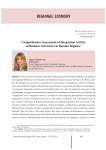
Comprehensive assessment of integration activity of business structures in Russian regions
Статья научная
In the context of economic sanctions and growing international isolation, the research into regional differences in integration development acquires special relevance for Russia; this fact determines the need for a comprehensive assessment of integration activity of business structures in Russian regions. The diversity of approaches to the study of problems and prospects of economic integration and the current debate about the role of integration processes in the development of regional economies determined a comprehensive approach to the concepts of “integration” and “integration activity” in order to create objective prerequisites for analyzing integration activity of business structures in the regions of Russia. The information base of the research is the data of Russian information and analytical agencies. The tools used in the research include methods for analyzing structural changes, methods for analyzing economic differentiation and concentration, nonparametric statistics methods, and econometric analysis methods...
Бесплатно
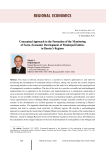
Статья научная
The study is relevant, because there is a necessity to improve approaches to and tools for monitoring the development of municipal entities in Russia, taking into account the current situation concerning statistics in the context of municipalities and the tasks to be addressed at the municipal level of management in modern conditions. The aim of the work is to provide a scientific and methodological substantiation for an approach to the formation and implementation of a comparative monitoring of socio-economic development of municipalities at the intraregional and interregional levels. To achieve the goal, we use scientific methods such as economic and statistical analysis, generalization, and expert survey (questionnaire survey of Vologda Oblast municipalities’ heads). Scientific novelty of our research consists in the development of a unified approach to organizing municipal monitoring in Russia’s constituent entities. The approach should take into account the current situation concerning municipal statistics and help to compare local territories of different regions. We describe a methodological approach to organizing the monitoring of Vologda Oblast municipalities; the results of the monitoring are reflected in the annual information and analytical bulletin “Socio-Economic Development of Municipal Districts”, issued by Vologda Research Center of the Russian Academy of Sciences since 2014. Based on the calculations of the integral indicator of the level of development of municipalities in the Vologda and Leningrad oblasts and the Komi Republic according to our own methodology, we reveal that statistical information presented in the Rosstat database containing indicators for Russia’s municipalities does not allow us to form an objective interregional typology of municipalities by development level. In this regard, we substantiate the ways to improve municipal monitoring and the expediency of using the indicators presented in statistics collections “Socio-Economic Development of Municipalities” published annually by territorial offices of Rosstat in constituent entities of the Russian Federation. The findings of our research can be used by federal, regional public authorities, local self-government bodies, scientific and educational organizations in analyzing the development of municipalities, as well as serve as a basis for further research on the subject under consideration.
Бесплатно
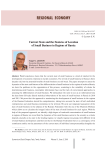
Current state and the features of location of small business in regions of Russia
Статья научная
World experience shows that the current state of small business is a kind of catalyst for the development of economic relations in market economies. The revival of small business in Russia is three decades old, but the potential benefits of small business are still weak. The paper attempts to assess the dynamics of the state and features of the differentiation of small business in the regions of modern Russia; we show the problems in the organization of this process, consisting in the variability of criteria for determining small business, incomplete information base and the lack of conventional approaches to assessing the differentiation of small business. We substantiate the need to use as an information base the data from full-scale federal statistical observations of the state of small business in Russia in 2010 and 2015. We prove that the approach to monitoring the development of small business in the regions of the Russian Federation should be comprehensive, taking into account the state of both individual entrepreneurs and small business enterprises in the territory...
Бесплатно

